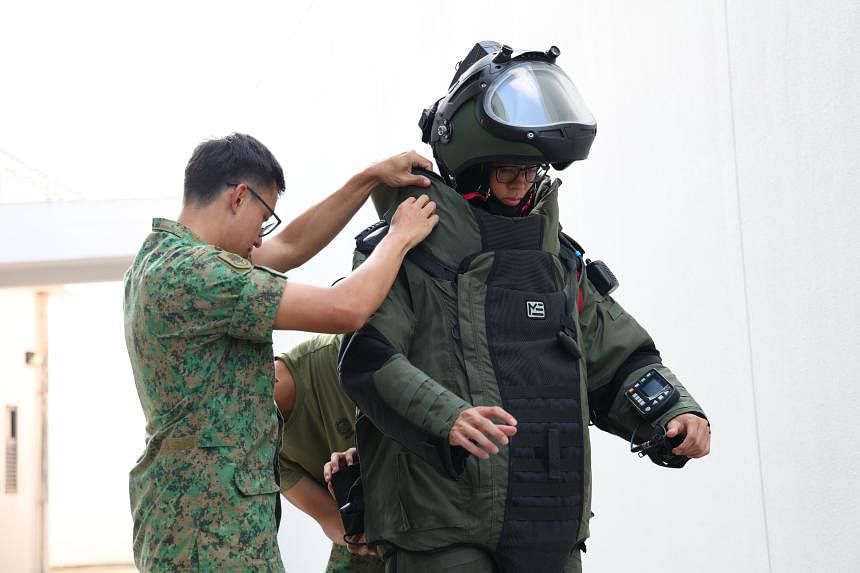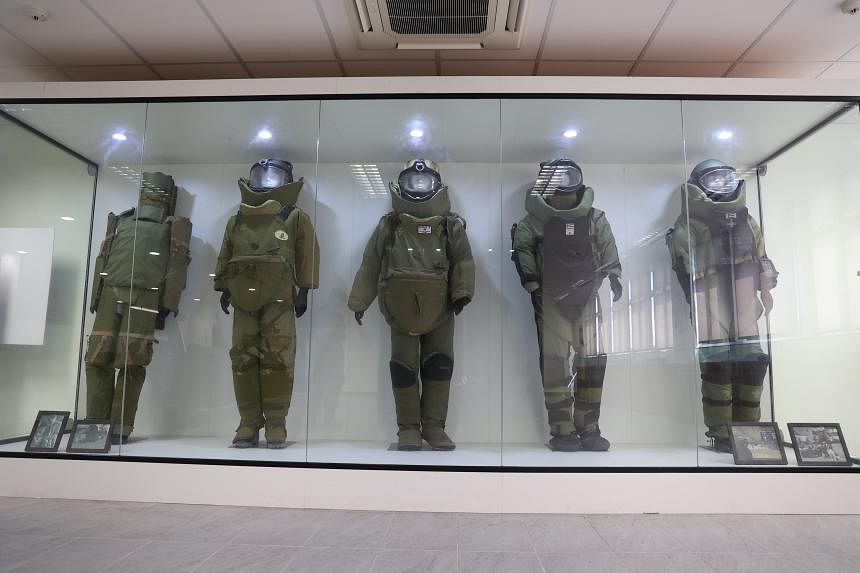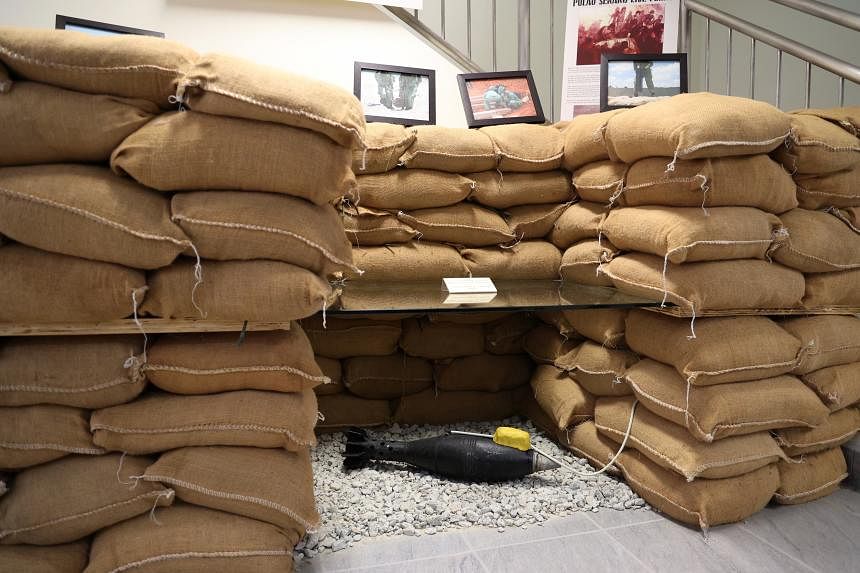SINGAPORE – Bomb disposal veteran Peter Chong has 18 years’ experience dealing with unexploded bombs, among them the largest war-era bomb to be neutralised in Singapore.
But the worry of such relics blowing up unpredictably still weighs on him every time he encounters one.
Part of the risk of handling the remnants of previous wars lies in the instability inherent in older bombs, said First Warrant Officer (1WO) Chong, who has destroyed about 10 such explosives as part of the Singapore Armed Forces’ Explosive Ordnance Disposal (EOD) unit, also known as the 36th Battalion Singapore Combat Engineers.
In 2016, the 41-year-old spent about three weeks disposing of a 227kg Vietnam War bomb – the largest of its kind found here – that came on a barge carrying a consignment of sand for land reclamation works in Tuas.
“Yes, we know how (the bomb) functions, but on the other hand, you still have the worry that this is still live. No matter how confident you are, you will still have the fear of what if (the bomb detonates prematurely),” he said.
The threat mounts when an unexploded bomb still has its fuse, the mechanism that initiates an explosion, as was the case for the 100kg World War II bomb found in Upper Bukit Timah in September, which triggered the largest evacuation involving such a war relic in Singapore.
Not only did the Upper Bukit Timah war relic have both its front and rear fuses, it also lacked a safety mechanism, said 1WO Chong, who supervised its disposal with the EOD unit’s commanding officer, Lieutenant-Colonel (LTC) Ng Tee Yang.
Last Thursday, the unit gave the media a peek into the sweat and toil that go into being the only national responder that is on standby round the clock to deal with any threats from unexploded ordnances and improvised explosive devices.
Representatives from the unit demonstrated how its personnel had responded to bomb threats over 54 years as its experience, technology and techniques increased in sophistication.
Since the EOD unit’s formation in 1969 with six members, including four officer cadets, it has tackled a range of bomb-related work, including clearance projects involving unexploded bombs found during land reclamation or underground tunnelling, assisting in overseas missions, and sweeping venues for bombs before national events. The unit declined to reveal how many members it has now.
Singapore’s densely packed residential areas, however, limits the unit’s ability to fully embrace the latest technological developments when unexploded ordnances are uncovered near estates.
This means that it still has to fall back on the use of sandbags and concrete blocks, said LTC Ng.
In response to the war relic in Upper Bukit Timah, the EOD unit activated 45 personnel to prepare the site over three days for live-firing to destroy the bomb and to build a protective shelter of 1,000 sandbags and 55 concrete blocks for surrounding structures.
Some of the boots on the ground in the bomb disposal operation were full-time national servicemen (NSFs) being trained to neutralise explosives and prepare beyond peacetime operations, said LTC Ng.
This comes as more unexploded ordnances from the past are expected to be found around Singapore due to construction works. Another bomb was discovered near Chapel Road in Katong last Friday.
Among the NSFs was Third Sergeant (3SG) Teo Jin Kay, who was activated for his first bomb disposal, six months after he started training for the role in April.
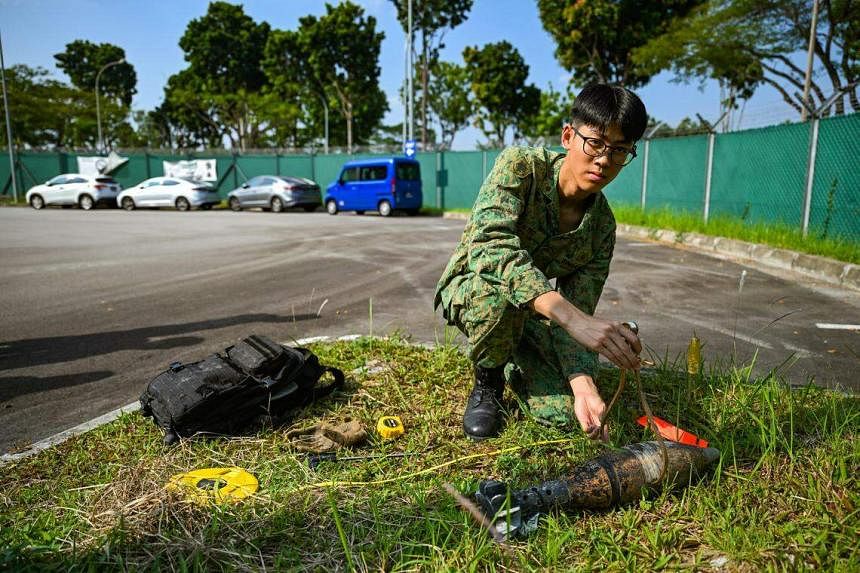
The 19-year-old said: “When my parents heard that I was going to be going near a bomb, they were very nervous.”
But his family’s anxiety eased after 3SG Teo explained the extensive preparation to deal with the ordnance, which included the commander’s assessment of the ordnance and method of disposal.
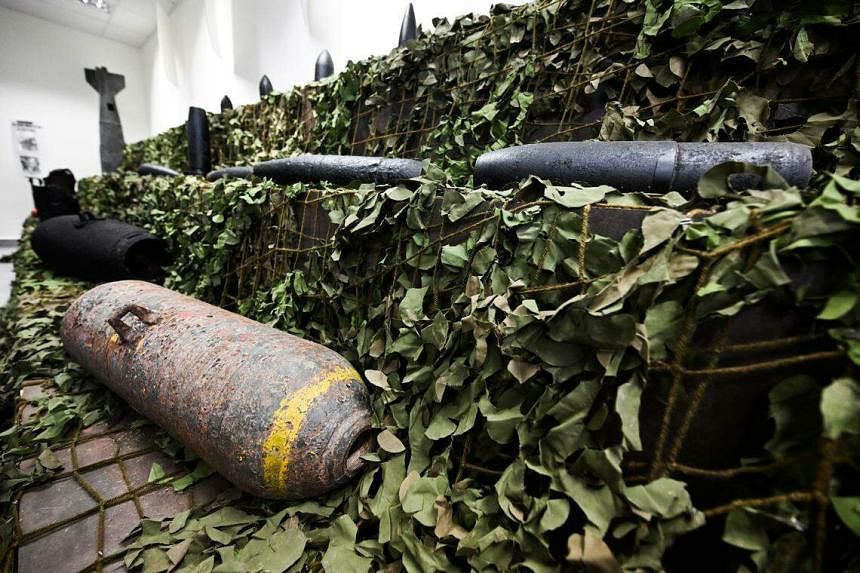
Said 3SG Teo: “It’s definitely less glamorous than what is shown in movies, (where) you don’t see the guys moving sandbags… In real life, it’s more like a team effort.”
Selecting and training candidates who can handle the unit’s high-stakes operations is a rigorous process, said LTC Ng. They have to be physically fit and mentally agile.
To be chosen for the EOD course, both NSFs and regulars have to undergo tests, which include completing an obstacle course in a bomb suit weighing 34kg without experiencing claustrophobia and solving challenging puzzles to test their ability to keep calm and think logically under pressure.
The Ministry of Defence declined to reveal the acceptance rate for the EOD unit.
Those who make the cut are then trained to deal with threats while wearing bomb suits, assess unexploded bombs, and manoeuvre remotely operated vehicles so nimble that they can move in tight spaces like aircraft aisles to neutralise improvised explosive devices. The EOD team has been using remotely operated vehicles since 1974.
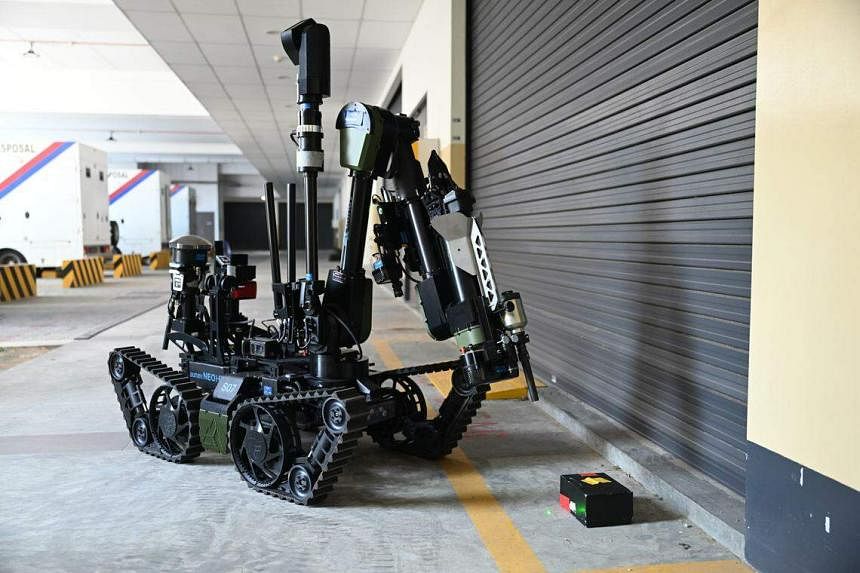
Regulars spend an average of three to five years training and gaining experience before they take up the role of team commander, while NSFs take a minimum of one year to be trained, LTC Ng added.
Members of the unit are also exposed to realistic scenarios to help them manage stress and maintain their focus during high-stakes bomb disposal operations.
LTC Ng said: “The key to this is to in-build that stress during training, during peacetime as much as possible.”
This involves donning heavy, sweat-inducing bomb suits, which are typically only required when handling improvised explosive devices that require human intervention, continuously for hours.
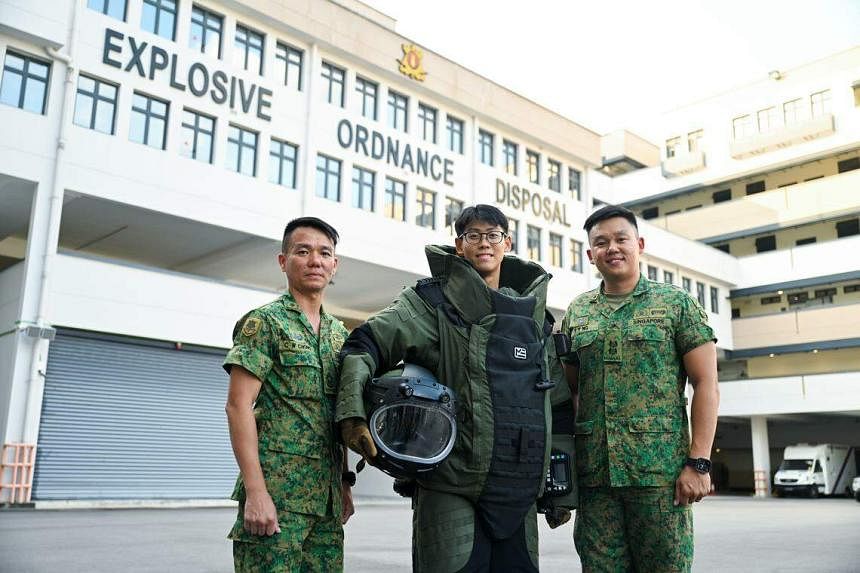
Armed with these skills, the team runs EOD operations to defend the security interests and sovereignty of Singapore, while improving the effectiveness and efficiency of its equipment through upgrades, such as bomb suits that are cooler to wear.
LTC Ng said: “As the threats we face are always evolving, we must always stay current with the latest threat landscape and be able to upkeep our skills for the required mission.
“The terrorists only need to get it right once, we need to get it right all the time.”
